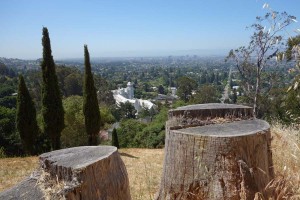In 2020, Albany Hill went bald. Most of its blue gum eucalyptus trees lost their leaves. From Interstate 80, roaring below, the hill looked dead and brown.
This bump of urban forest, popular with joggers and dog-walkers, rises sharply some 338 feet from the East Bay floodplain, though it looks taller from afar thanks to its shaggy eucalyptus hairdo. Tasmanian blue gums (Eucalyptus globulus) reach for the sky at its summit and down its steep flanks, filling the air with their minty-sharp scent, while a tangle of live oaks grasp the northern slope down to Cerrito Creek. The hill is home to native wildflowers, coast live oaks, riparian habitat along the creek, toyon and monarch butterflies.
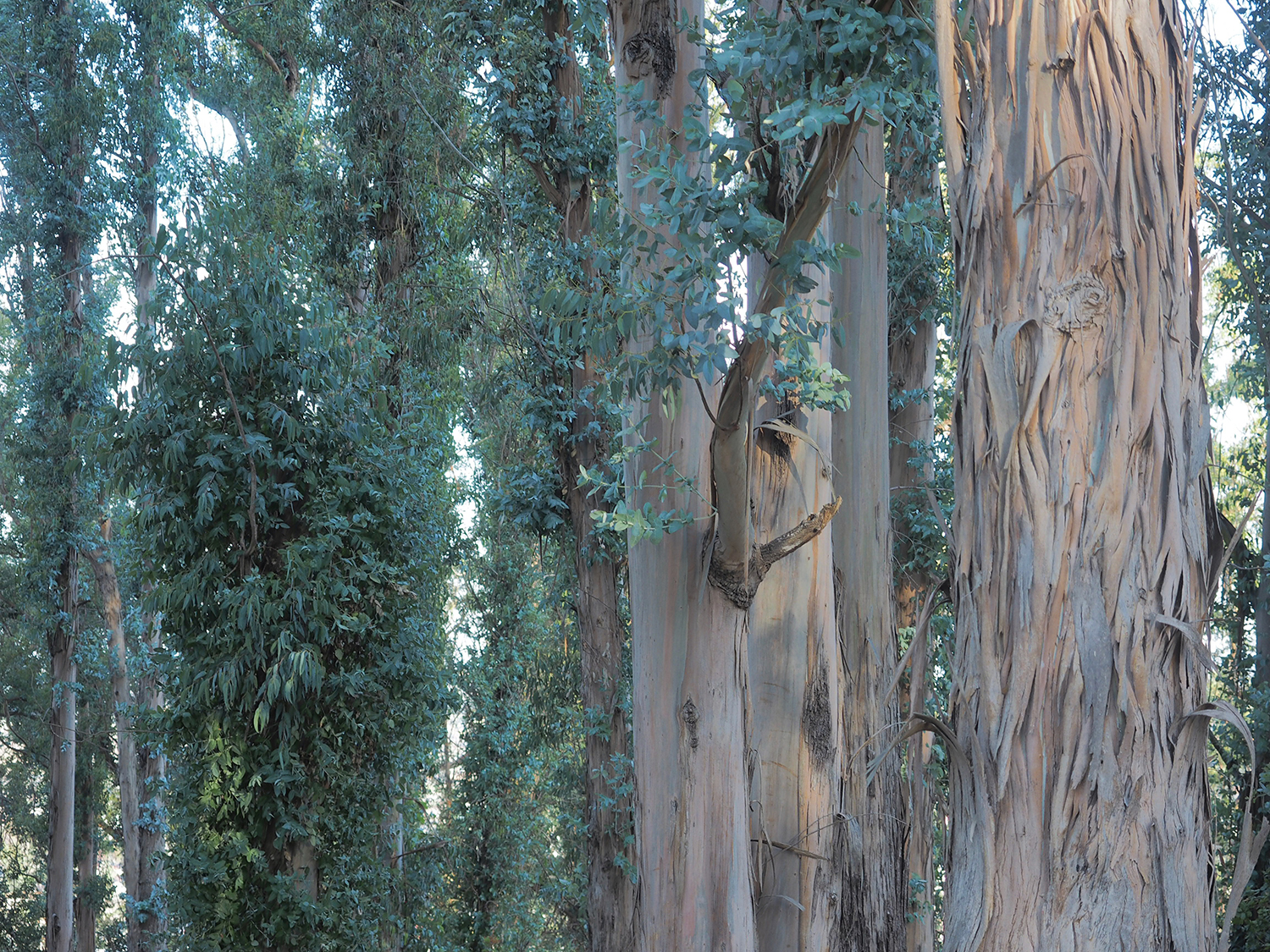
Albany Hill was hit particularly hard in a blight that came for the Bay Area’s eucalyptuses in 2020. That year, eucalyptus trees began to suffer from a dieback—a creeping decline of mysterious origin that left the trees with blotchy, withered leaves. The trees struggled to photosynthesize, and without food, they began to waste away. Arborists hired by the city of Albany, which owns about half of the hill, deemed many of the brittle, drought-parched trees a fire and falling risk for residents and park visitors.
Now, the city parks department has had fifteen of the most decrepit and hazardous eucalyptus trees cut down and milled into wood chips and planks for use right on the hill itself. The wood chips are mulch, and the lumber will be installed as railings and retaining walls by Eagle Scout and Urban Tilth trail crews.
The removal of blue gums on Albany Hill is just the latest chapter in the saga of one of California’s most controversial invasive species.

The eucalyptus wars
For some, eucalyptus trees are dangerous intruders that must be eradicated.
They are, undeniably, pervasive invasives. They’re messy, leaving curls of peeling bark draping toward the ground. They guzzle water, dominate landscapes, and are difficult to remove.
Their planting was “really a huge, gigantic mistake, that we are suffering from now for decades,” says U.S. Forest Service plant pathologist Susan Frankel.
A lot of public vitriol over eucalyptus can be traced back to the 1991 Oakland Hills fire, which tore through dense eucalyptus stands and razed 1,500 acres, killed twenty-five people, and left thousands homeless. Some critics claim the huge, oily trees are particularly flammable. But this point remains in scientific dispute.
Eucalyptus also has its benefits. Supporters appreciate their fresh scent and majestic appearance. The trees also provide shade and habitat for nesting raptors and migrating monarch butterflies.
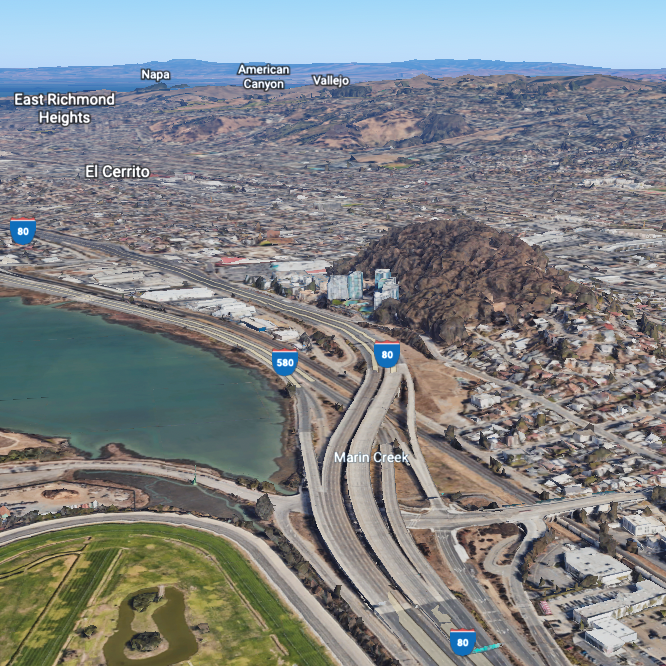
How the bump got its trees
Albany Hill may seem out of place, but it’s naturally formed. It’s made of sandstone that formed back in the Cretaceous Period, some 70 to 83 million years ago. This strip of ancient bedrock is called the Novato Quarry Terrane, which is also exposed at Piedmont in Oakland, Point Richmond, and Point San Pablo. Movements in the San Andreas fault system remixed layers of existing bedrock and separated parts of the terrane into the string of bumps we see today. The next-door city of El Cerrito is named after what the Spaniards called the formation, which translates to “little hill.”
It wasn’t always topped with a forest. According to Margot Cunningham, the natural areas coordinator for the City of Albany, Albany Hill and the surrounding plain were once covered in grassland dotted with oaks. Eucalyptus arrived in California in the 1850s as an ornamental tree. During the Gold Rush and the Bay Area’s rapid urbanization through the 1880s, settlers were planting it in droves for lumber, firewood, windbreaks, and along streets. The Giant Powder Company—the nation’s first dynamite manufacturer—planted hundreds of blue gums on Albany Hill to buffer nearby neighborhoods from explosions. The Golden Gate Fields horse-racing track and Interstate 80 have long since taken the Giant Powder Company’s place—but over 140 years since its heyday, neighborhood residents and forest managers are still dealing with the repercussions of the company’s eucalyptus planting frenzy as the trees struggle in an increasingly dry climate.
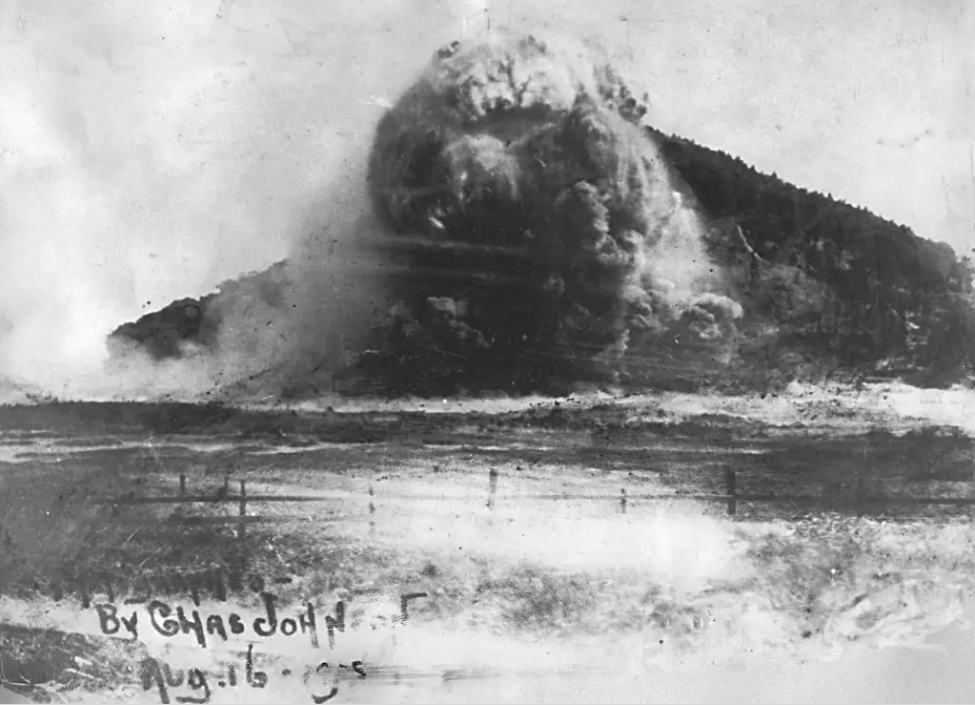
Invasive homes for endangered butterflies
That spree, however, created new butterfly habitat, according to Stuart Weiss, a longtime conservation biologist and butterfly expert.
On Albany Hill, endangered monarchs roost in the eucalyptus stands in colorful clumps by the tens, hundreds or thousands, depending on the year, according to the Xerces Society, an invertebrate conservation organization that conducts annual monarch counts across California. Weiss wants to preserve the eucalyptuses—invasive non-natives that they are—for the butterflies’ sake.

“The monarchs made their choice,” says Weiss. “They go for the eucalyptus, so we have to honor that.”
The key to a cozy roost, according to Weiss, is a configuration of mature trees that provide just the right mix of sunshine and protection from wind and storms. Monarchs prefer to cluster along Albany Hill’s city-owned ridgetop early in the season. Later in winter, they cluster on the hill’s privately owned southwestern slope, and near the condos at the foot of the hill’s western flank. The fate of the trees and the butterflies roosting on that land is unclear.
A blight culprit is found
When scientists investigated what was behind the eucalyptus blight, they found that the enemy came from within.
Matteo Garbelotto, a UC Berkeley professor and forest pathologist for the University of California system, led a team that tested tissues from sickened eucalyptus trees from six sites across the Bay Area, including Albany Hill. Only one species of fungus, Pseudosydowia eucalypti, was found in all the affected trees across the six sites. Not much is known about this fungus, but researchers think it is endophytic, meaning that it usually lives inside eucalyptus trees wherever they are found and coexists harmlessly—until it doesn’t.

“The primary infection is caused by these fungi,” Garbelotto says. “But it’s only triggered when there is some kind of physiological stress.”
Garbelotto’s team concluded that the eucalyptus dieback was driven by the environmental stressors of drought and heat. The trees’ stress response triggered an abrupt shift in how the fungus operated, transforming it from a peaceful roommate into an opportunistic plague.
“The only treatment,” Garbeletto says, “would be to make the trees happy.”
That is, give them more water and cooler weather to de-stress the trees and restore microbial harmony. But as climate change drives a hotter, drier, and less foggy climate in the Bay, Garbelotto says, eucalyptus is unlikely to be able to thrive in California as it has in the past.

Albany Hill’s living dead
Eucalyptus trees are notoriously difficult to kill. Removing them usually requires applying herbicides on their stumps, since the trees are capable of resprouting multiple new, densely packed trunks from their stumps after being cut down. They can persist even after being burnt by wildfire—and apparently after plagues of drought, heat and fungal betrayal. The Albany Hill stands that were leafless in 2020 are now covering the hill with fresh green fuzz.
“Eucs continue to sprout from their stumps after they’re cut down,” says Cunningham. “They don’t give up easily.”
But like zombies, many of the trees resprouting from the dieback are damaged or rotting from the inside, even as they shamble up toward the sun.
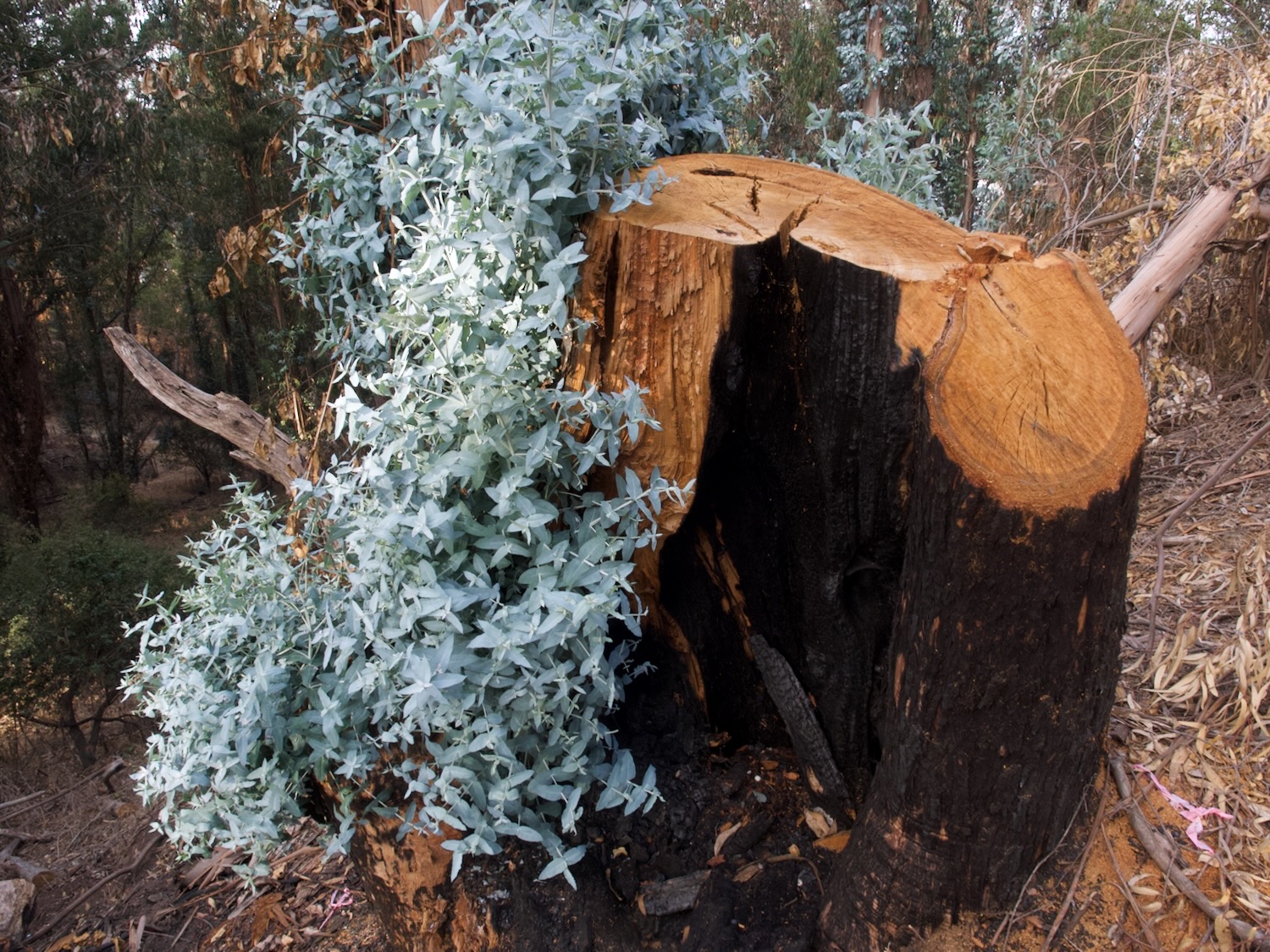
The arborists who evaluated Albany Hill’s dieback agreed with Garbelotto. They recommended removing the trees, because they will never fully recover and will only become more hazardous as they fall apart. Plus, allowing the few trees that escaped the worst of the dieback to remain will expose them to higher winds, increasing the chances of them falling and hurting someone.
“Removal of all eucalyptus trees is the most efficient course of action,” the arborists wrote.
So far, only the fate of the fifteen most dead, most hazardous eucalyptuses has been sealed. In September, fresh wood chips made from their flesh perfumed the summit of Albany Hill. A stack of scented two-by-six planks laid out in the sun to dry. Cunningham’s team is pursuing grants to cut down most of the blue gums and plant the city’s side of the hill with a mix of native species and more drought tolerant trees for monarchs to roost. Even if most of the existing eucalyptuses recover their foliage, drought and heat driven by climate change are likely to continue, haunting Albany Hill’s fragrant wig with future cycles of blight. But if the park’s long-term plan works, the butterflies will still have a home.
Update Oct. 25, 2022: This article has been updated to clarify that the City of Albany employees had eucalyptus cut, rather than cutting it themselves, in the removal pilot project, and that the removals will only happen on the city-owned side of Albany Hill. It has also been corrected to show that the city intends to remove most, not all, of the blue gum eucalyptuses on its side of the hill.

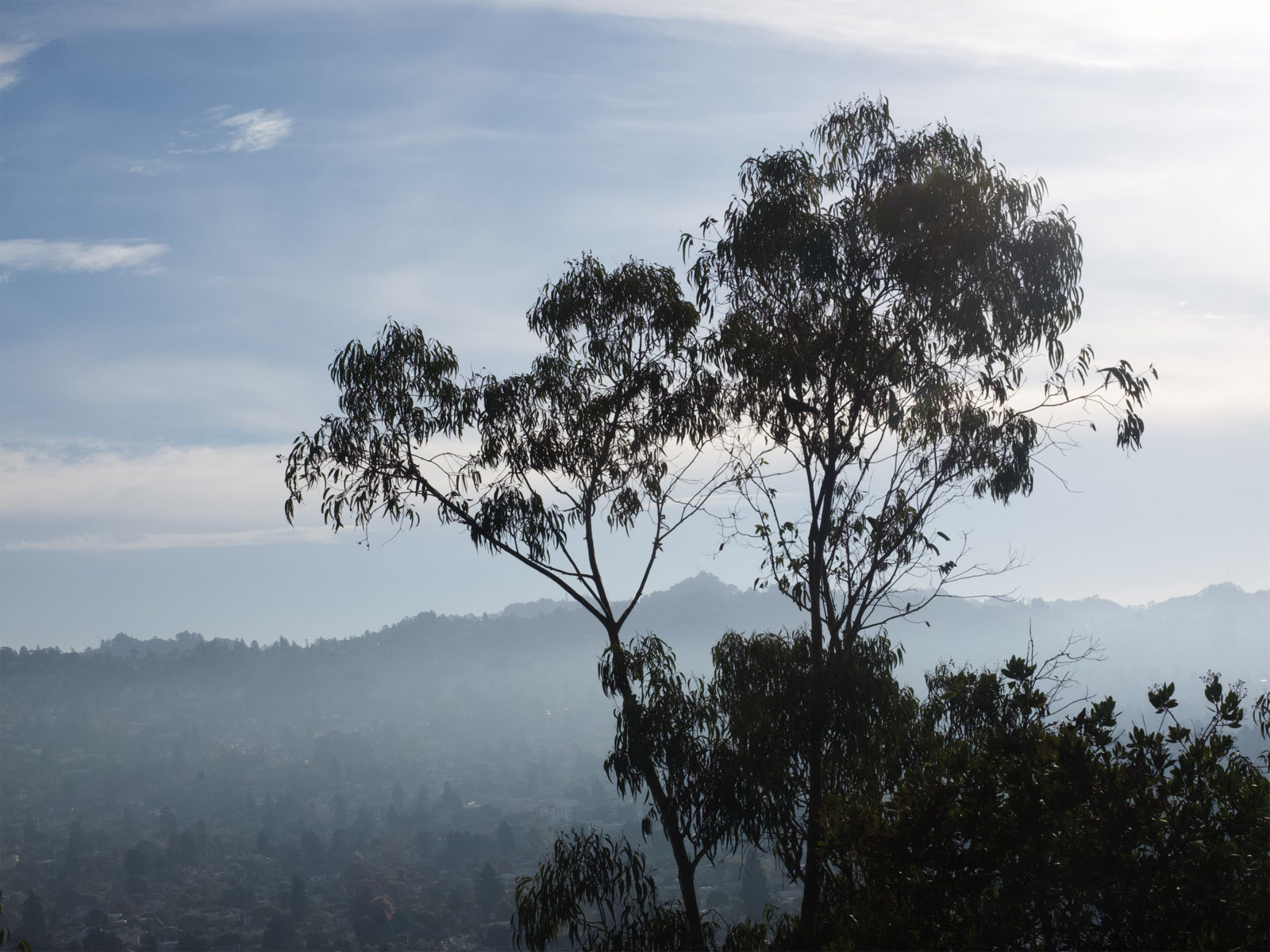
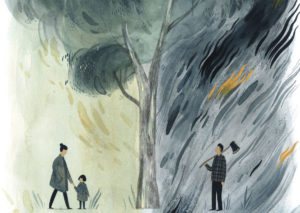

-300x193.jpg)
